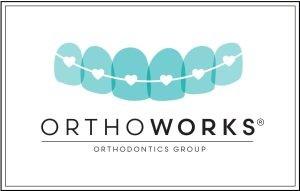 So your kid needs braces. At their last dental appointment, their dentist mentioned that they may need braces. The next thing you know, you are scrambling a bit to prepare yourself and your child for the teeth alignment journey ahead and find yourself mouth-deep in so. Many. Questions.
So your kid needs braces. At their last dental appointment, their dentist mentioned that they may need braces. The next thing you know, you are scrambling a bit to prepare yourself and your child for the teeth alignment journey ahead and find yourself mouth-deep in so. Many. Questions.
1. What has improved in braces over the last few decades (i.e. when the parents were kids)?
The biggest change to orthodontic treatment in the last 20 years has been the advent of Clear Aligner Therapy. You know this most commonly as Invisalign, a product from the company Align which produces clear aligners. Additionally, 3D photo-scanning has made great strides to more accurately capture a patient’s oral anatomy, allowing for more precise fabrication of appliances. Finally, our overall understanding of how teeth move has been enhanced through the use of 3D radiological imaging, which allows us to better visualize the teeth within the bone. Together, these innovations have propelled orthodontics into the digital age.
2. Are there different types of braces?
Traditional braces: Standard metal brackets that are placed on teeth with an adhesive and connected by wire that requires periodic tightening, so steady pressure can gradually straighten your teeth and align your jaw.
Clear Aligner Therapy (Invisalign is one example): This utilizes “clear trays” that are custom fit to your teeth. You wear them in a weekly rotation and each tray moves the teeth little by little. This has become a popular option for both kids and adults due to the ease of cleaning the teeth and less dietary restrictions while still being esthetic and comfortable. But you gotta make sure you wear them!
Clear braces: This category would still fall under the category of “braces”, but advancements in dental materials have allowed companies to produce clear braces, so that they are not as noticeable as traditional metal braces.
Lingual braces: While technically still braces, they are on the back side (aka the tongue side) of the teeth so they are not as visible when smiling. They are a good option for patients who want something more esthetic but don’t think they would wear their clear aligners well
3. Do braces damage/affect enamel?
The braces themselves do not damage the enamel. During the process of preparing the tooth for gluing braces on, we utilized an acid “shampoo” that dissolves a very microscopic amount of enamel (microns thin) which allows our dental glues to stick to the tooth better. After, we apply a primer (effectively a “conditioner”) which refills the microscopic pores that the shampoo cleaned. This way our glue can adhere to the surface of the tooth. Upon time to remove the braces, the glue is gently removed with a polishing instrument which does get very close to the enamel but is not intended to actively remove enamel. The amount “removed” is similar to what a hard bristle toothbrush would remove, aka a microscopic amount.
4. How do I prepare my child for braces?
The first resource I recommend is to ask friends and family about their orthodontic experiences. You can also refer to Instagram, Facebook, and YouTube where many people have blogged/vlogged about their braces journey. If you already have a treatment start-date schedule, I would recommend getting your child used to a new hygiene and diet routine before that date. Have them practice brushing their teeth 3 times a day (Morning, after lunch, and before bed). Once braces go on, cleaning the teeth after all meals and snacks will help to keep plaque at bay and the teeth healthy during treatment. Also, reduce the amount of tempting hard, crunchy, and sticky foods that they eat so when braces do go on, they already know what foods to avoid.
5. What’s the average age of orthodontic patients? What’s the average treatment period and adjustment frequency?
In the past 20 years, the overall average age of patients has increased as more and more adults seek treatment. Currently, at Orthoworks, the overall average sits around age 18-20, but we see a wide range of patients, from as young as 6 years old to as mature as 83! Thus, it is better to subcategorize the age groups so you can better see which treatment-age category you fit into. For our early interceptive cases, the average age is 8 years old. For our teenage comprehensive cases, the average age is 13-14. For our adults, the average age is late 20s to mid-30s.
7. Does my child need to have their wisdom teeth taken out before braces?
If your child is in their early to mid-teens, we typically do not advise wisdom teeth to be removed. But there are some rare exceptions to this.
8. Can our orthodontist take out our wisdom teeth?
Orthodontists are what I lovingly refer to as “tooth movers”. We typically do not take out wisdom teeth as this procedure is considered an extraction. Depending on the situation, either your general dentist or an oral surgeon would be the one to see. However, many orthodontists do make referrals for wisdom teeth extraction as we frequently obtain a type of x-ray called a “panoramic radiograph” which can show us incidental findings, such as impacted wisdom teeth.
To learn more, visit orthoworks.com and schedule a virtual consultation.
 WENDY FANG, DDS, MPH
WENDY FANG, DDS, MPH
Dr. Fang is a graduate of Stony Brook University, where she received her Bachelor of Science degree in Biology, Doctorate of Dental Surgery (DDS), and Masters in Public Health (MPH). Following dental school, she went on to earn her Certificate in Orthodontics at Montefiore Medical Center in The Bronx, NY where she was appointed Chief Resident in her third year. Dr. Fang’s dedication to continuing education and passion for dentistry is what allow her to provide an excellent standard of care to patients of all ages. She is a member of the American Association of Orthodontists and the Pacific Coast Society of Orthodontists and is ABO board-certified.
Whilst Dr. Fang is very dedicated to her work and patients, she still finds the time to enjoy the company of family and friends. She is always keen to explore new foodie scenes and adventure out into the world when she gets the chance.
 About Orthoworks Invisalign and Orthodontics Group
About Orthoworks Invisalign and Orthodontics Group
OrthoWorks Invisalign and Orthodontics Group is the #1 Provider of Invisalign treatments in the San Francisco Bay Area and was founded by Dr. David Shen, who is recognized as one of the top five most experienced Invisalign® doctors in the world and is a member of the Top 1% Elite Provider Club. Dr. Shen and Associates specialize in providing orthodontic care using a variety of techniques including Invisalign® appliances, traditional braces, surgical orthodontics, cleft palate/cleft lips, and sleep apnea. In short, their practice is dedicated to one goal: to create healthy and beautiful smiles for children and adults using the highest quality of orthodontic care available. To achieve this, Orthoworks utilizes the latest technological advancements in the field together with the team’s collective experiences. Over the years, the practice has grown from its original three locations to over ten locations throughout the San Francisco Bay Area, serving over 60,000 orthodontic patients.





















